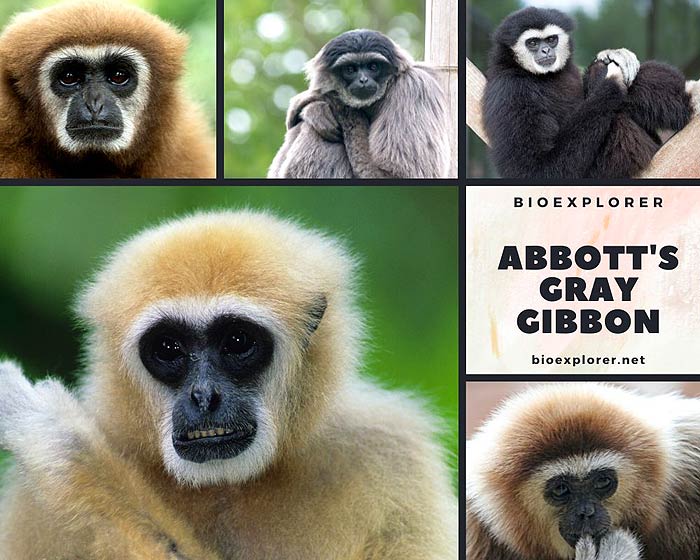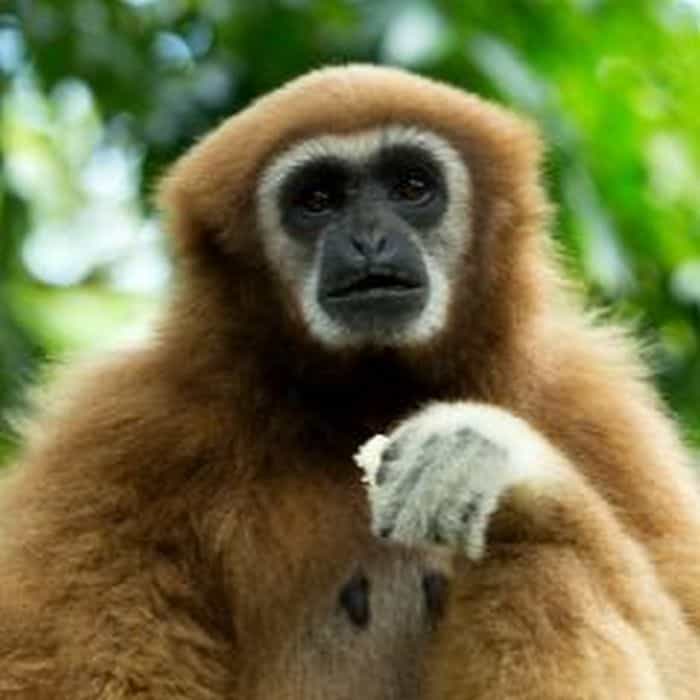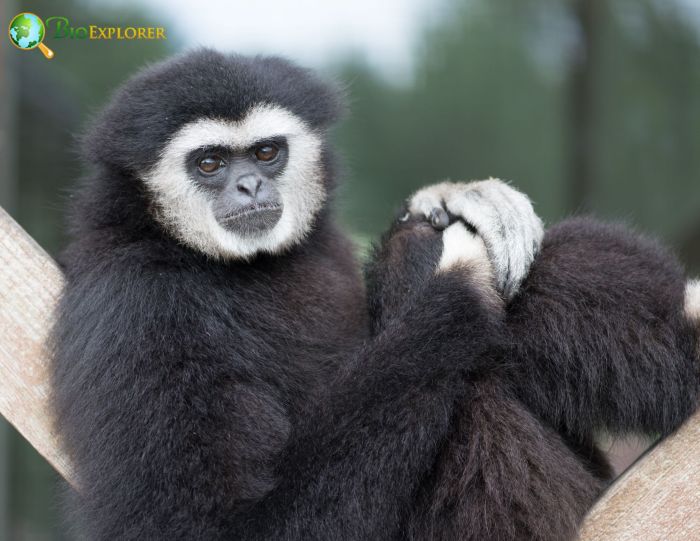
| Animalia | Primates | Hylobatidae | Hylobates | Hylobates abbotti |


- Common Name: Abbott’s Gray Gibbon
- Taxonomy Classification Year: 1929
- Monkey Size: 40 to 90 cm (15 to 36 inches)
- Skin Color(s): Brown, Grey, Yellow, Black, White
- Habitat: Rainforests
- Diet: Omnivorous
- Native Countries: Borneo island (a part of Brunei)
Abbott’s Gray Gibbon Characteristics

The Abbot’s gray gibbon[1], also known as a western gray gibbon, is an acrobatic primate of the gibbons’ family, Hylobatidae. Abbott’s gray gibbons are very small and light.
- These species have a small, round head, long arms, and a slender, short body. Like all apes, they have no tail.
- They are covered in dense light to very dark brown (or black) fur over most of their body (except for the face, palms, fingers, forearms, and armpits).
- Abbott’s gray gibbons have hairless faces with small nostrils, dark eyes, and jet-black fur.
- Their hands are very similar to ours; they have 4 long fingers and a small opposable thumb. Their feet have five toes, including an opposable big toe.
Abbott’s Gray Gibbon Name Origin
The Abbott’s gray gibbon was named after zoologist William Louis Abbott. He discovered the species in 1905[2] in the Southeast Asian island of Borneo.
Abbott’s Gray Gibbon Facts
- Depending on gender, Abbott’s gray gibbons weigh 6 to 9 kilograms.
- They have extra-long arms and powerful legs for swinging and leaping from tree to tree.
- They are better at walking on two feet than any other ape or monkey.
- This species is endangered due to heavy deforestation in Borneo and increased forest fires.
Suggested Reading: Types of monkeys | Types of Apes
Cite This Page
APA7MLA8Chicago
BioExplorer.net. (2025, April 14). Abbott’s Gray Gibbon. Bio Explorer. https://www.bioexplorer.net/animals/mammals/apes/abbotts-gray-gibbon/.
BioExplorer.net. "Abbott’s Gray Gibbon" Bio Explorer, 14 April 2025, https://www.bioexplorer.net/animals/mammals/apes/abbotts-gray-gibbon/.
BioExplorer.net. "Abbott’s Gray Gibbon" Bio Explorer, April 14 2025. https://www.bioexplorer.net/animals/mammals/apes/abbotts-gray-gibbon/.










